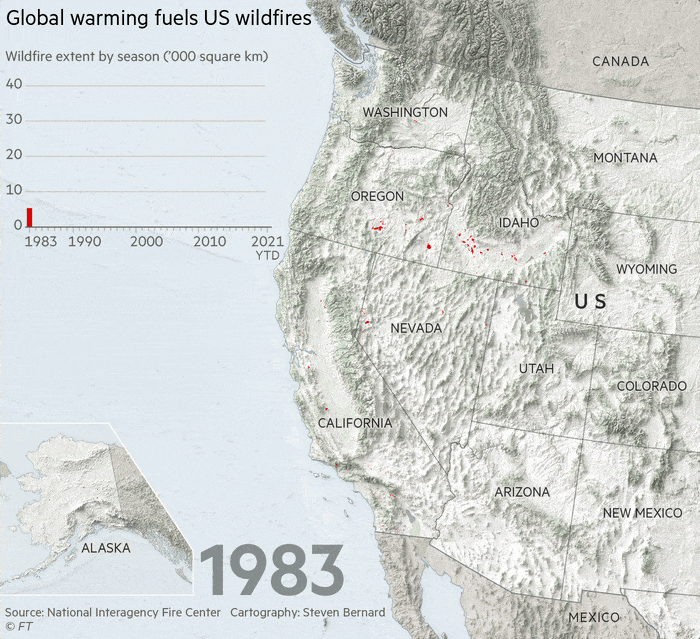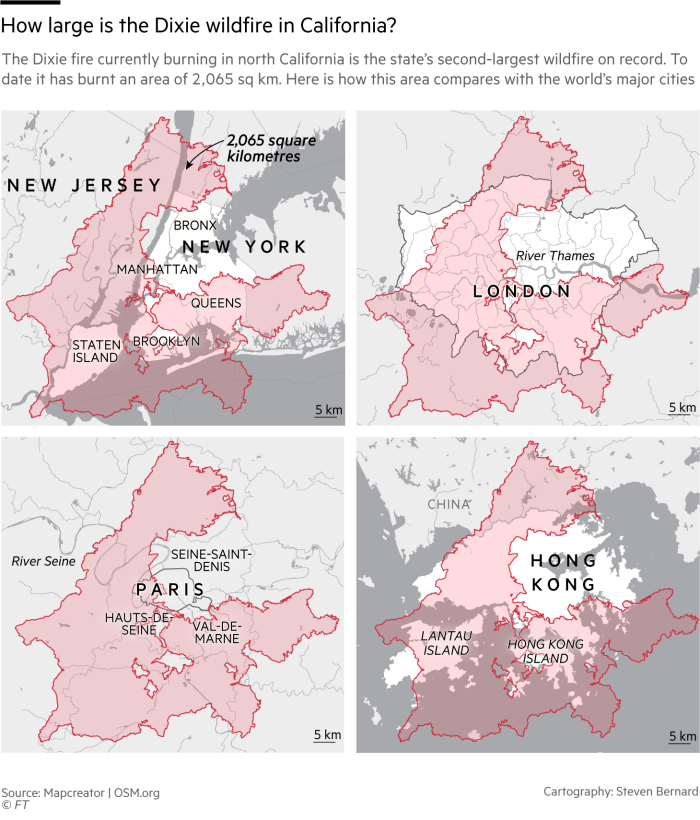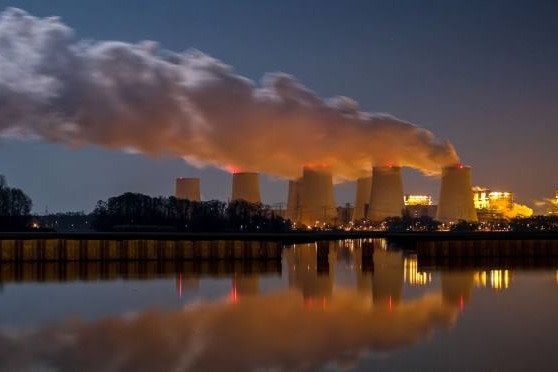California struggles to control fire devastation wrought by global warming

Simply sign up to the Climate change myFT Digest -- delivered directly to your inbox.
The “unequivocal” conclusions about human-induced global warming in the latest UN Intergovernmental Panel on Climate Change report are reinforced by the experience in California where residents have battled with destructive wildfires in recent years.
Citizens of the most populous state in North America are now struggling to contain the Dixie wildfire which has been burning since July 14.
To date Dixie has scorched 2,065 sq km of land, but more troubling is that it is only 30 per cent contained. Coupled with predicted dry thunderstorms and lightning strikes, the fire has the potential to spread still further.
This follows the largest wildfire in California’s history in 2020, when the August Complex fire burnt more than 4,100 sq km.

The IPCC report laid out in stark terms the impact of global warming in fuelling increasingly intense and more frequent severe weather events.
Even on a best-case scenario of deep cuts in emissions of greenhouse gases, temperatures are still expected to reach 1.5C above pre-industrial times within two decades.
The report also forecast that extreme temperature events were likely to happen four times more every 10 years than they would have in a climate without human influence.
With more extreme temperature events and drier conditions predicted in the future, Californians could expect these once-in-a-decade wildfires almost every other year, the scientists said.
Follow @ftclimate on Instagram
Climate Capital

Where climate change meets business, markets and politics. Explore the FT’s coverage here.
Are you curious about the FT’s environmental sustainability commitments? Find out more about our science-based targets here
Comments